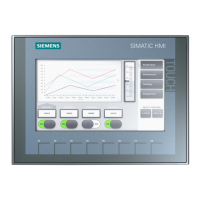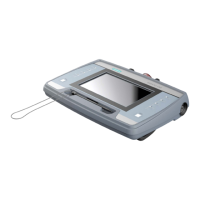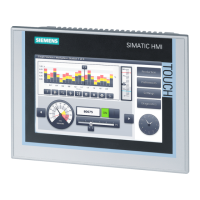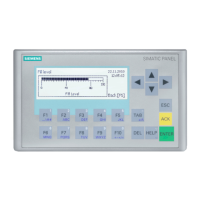Technical specifications
8.2 Directives and declarations
Basic Panels
Operating Instructions, 04/2012, A5E02421799-03
119
Sinusoidal interference
The following table shows the EMC behavior of the modules with respect to sinusoidal
interference. This requires the HMI device to meet the specifications and directives for
electrical installation.
Sinusoidal interference Test values Degree of
severity
HF radiation (in
electromagnetic fields) in
accordance with IEC 61000-
4-3
• 80% amplitude modulation at 1 kHz
with 10 V/m in the range of 80 MHz to 1 GHz
with 3 V/m in the range 1.4 GHz to 2 GHz
with 1 V/m the range 2 GHz to 2.7 GHz
• 10 V/m with 50% pulse modulation at 900 MHz
10 V/m with 50% pulse modulation at 1.89 GHz
3
RF interference current on
cables and cable shielding
conforming to IEC 61000-4-6
Test voltage 10 V, with 80% amplitude modulation of 1
kHz in the 9 MHz to 80 MHz range
3
Emission of radio interference
The following table shows the unwanted emissions from electromagnetic fields in
accordance with EN 55011, Limit Value Class A, Group 1, measured at a distance of 10 m.
From 30 to 230 MHz < 40 dB (μV/m) quasi-peak
From 230 to 1000 MHz < 47 dB (μV/m) quasi-peak
Additional measures
To connect an HMI device to the public electric network, you must ensure its compliance
with Limit Value Class B to EN 55022.
8.2.2 ESD guideline
What does ESD mean?
An electronic module is equipped with highly integrated components. Due to their design,
electronic components are highly sensitive to overvoltage and thus to the discharge of static
electricity. Such electronic components or modules are labeled as electrostatic sensitive
devices.
The following abbreviations are commonly used for electrostatic sensitive devices:
● ESD – Electrostatic sensitive device
● ESD – Electrostatic Sensitive Device as a common international designation

